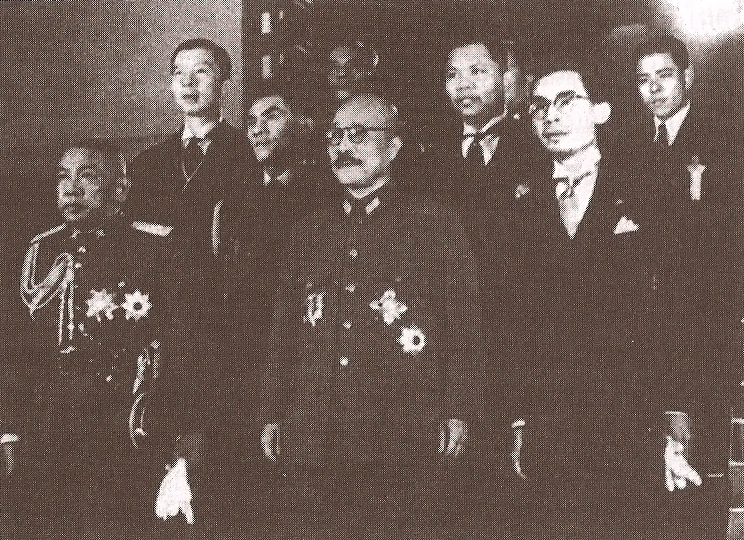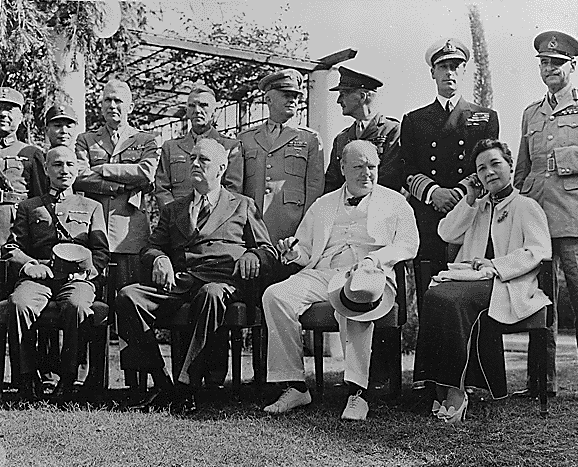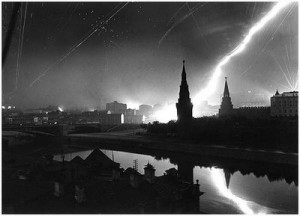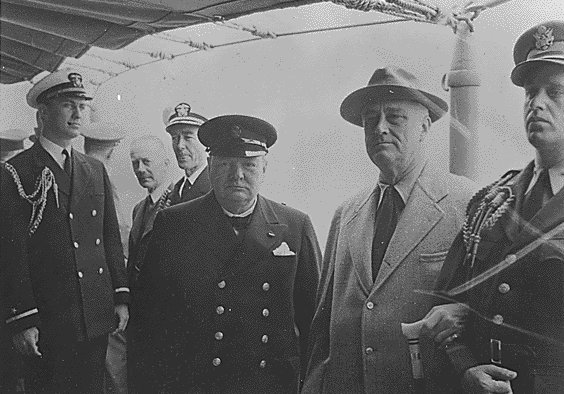Posts Tagged ‘Stalin’



Photograph of Phot Phahonyothin (far left) with Hideki Tojo (center) in Tokyo 1942)
On this day in 1941, Thailand allied with Japan. Thailand was valuable for the Axis powers, as their airfields, ports, and railways would be instrumental in planned invasions of Malaya and Burma. The partnership was not necessarily an equal one; their alliance was the result of the December 8 Japanese invasion of Thailand after failed negotiations, the Thai resistance lasting only hours before a ceasefire was declared. Like many countries, Thailand joined the Axis powers because of military pressure.
Why countries joined the Axis or the Allies was complex, often rooted in many different factors, such as how much military power that country held, what political system they followed, and where they were located geographically. When trying to understand the complicated course of WWII, it is helpful to know the main players and their goals. So, who were the Axis powers and who were the Allies? (more…)




Kai-shek, Roosevelt, Churchill, and Madame Chiang seated at the Cairo Conference in November 1943. Courtesy of the National Archives.
Today in 1943, President Roosevelt, Prime Minister Churchill, and Generalissino Kai-shek convened in Cairo, Egypt to reevaluate Allied tactics on fighting and defeating Japan, and the subsequent actions that would be taken once the Pacific War had been won. The Cairo Communique, as it became known, was released to the public on 1 December 1943 and outlined goals for post-war Japan.
(more…)



“Before three months have passed, we shall witness a collapse in Russia, the like of which has never been seen in history.”—Adolf Hitler, 2:30am, June 22, 1941
October 1941 was an especially grim time for the Soviet Union as it appeared that Adolf Hitler might win his historical gamble to crash in the Soviet Union and end the eastern war with a military victory before the United States was drawn into the conflict. A solitary Great Britain would then be forced to come to terms with Germany’s impregnable continental triumph. Hitler would then be free to pursue his dream of a greater Aryan empire in eastern Europe, an empire economically supported through enslaving the Slavic peoples while cleansing the lands of all racial undesirables. Hitler was betting that a Blitzkreig strike against the Soviet Union could attain a military defeat within six months, paving the way to his Aryan utopia.
The German army which launched Operation Barbarossa at 3:30am on June 22, 1941, along a long front stretching from the Baltic to the Ukraine totaled over 3.1 million men. In its mechanical force it had nineteen panzer divisions and twelve motorized divisions, 3,350 tanks, 5,000 aircraft, and 7,000 pieces of artillery. General von Bock’s Army Group Center, located in the center of the line, had two objectives: first to capture Minsk, and then make the decisive strike to the heart by driving to Moscow. Army Group North would capture the Baltic and Leningrad; Army Group South would drive to Kiev and the southern oil fields. Hitler’s Blitzkreig strategy again relied upon speed, and the initial thrust did not disappoint. His Panzer divisions knifed ahead fifty miles a day once the attack was launched; German forces were overrunning and encircling Soviet troops. Because the Soviet troops had been warned, their superior numbers did not translate into resistance, but rather greater numbers of captured prisoners. The Luftwaffe was initially very effective in cutting rail and road support for the Soviet armies, and over 5,000 Soviet planes were destroyed on the ground by August, almost fifty percent of the Soviet front-line defensive air strength.

German Raid on Moscow, 1941
(more…)




With the 70th anniversary of Pearl Harbor on the horizon, we turn our attention to the eve of US involvement in the war that changed the world. This entry by the Museum’s Senior Director of History & Research, Keith Huxen, is just one of many historical essays on 70th anniversaries we will be posting in coming years. You can also keep up with significant dates by following the Museum’s Twitter feed, @wwiitoday.
The Atlantic Charter: 70th Anniversary, August 14, 1941
In the summer of 1941 the historical pathway of the Second World War was rapidly changing. In Asia, Japan found herself still struggling after four years to complete and consolidate her conquests in China without recourse or access to the raw materials spread further across the Southeast Asian archipelago. Pressure in the European war was also reaching critical mass. Great Britain, having survived the previous summer by fending off Operation Sea Lion, Hitler’s planned invasion across the English Channel, had continued to fight Germany alone. Unable to complete Britain’s defeat by late October 1940, Hitler gambled and unleashed Operation Barbarossa, the German invasion and double-cross of the Soviet Union. The Germans believed that total victory over the USSR could be completed in six months. Germany’s gamble would achieve four great objectives: Soviet defeat would rob Britain of her last potential European ally and force Britain to a separate peace; Hitler would eliminate the Soviet Communist regime which he regarded as his great ideological enemy; Hitler would acquire through invasion the vast Lebensraum or eastern living space in Ukraine where he intended to build a purely Aryan empire; and last, as the German army acquired and controlled the territories of Eastern Europe, Hitler would gain control of two-thirds of Europe’s Jewish population (along with other racial undesirables in the Nazi lexicon) which he intended to extinguish from European life. Unleashed on June 22, 1941, the Nazi invasion and strategy appeared to have a good chance of success as the Nazis drove deep into Soviet territories.
Despite a long and dedicated political opposition to Communism, Britain’s Prime Minister Winston Churchill immediately welcomed Joseph Stalin and the Soviets as an ally in the fight against Nazism. When questioned on his political pivot, Churchill famously observed that “if Hitler invaded Hell, I would at least make a favorable reference to the Devil.”
(more…)








